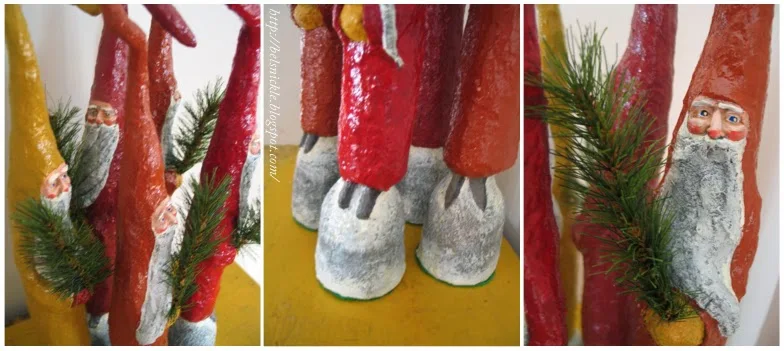"For verily I say unto you, That whosoever shall say unto this mountain,
Be removed, and be cast into the sea; and shall not doubt in his heart,
but shall believe that those things which he said shall come to pass; he
shall have whatsoever he said." Mark 11:23
 |
| cover |
At the coming of the Christmas time, we are apt to give much thought to the likes and dislikes of those about us. We want to please, and we do not spare ourselves in the endeavor to bring into other lives a moment of happiness. We are even happy because of the happiness we bestow. Yet how often, when the occasion is past, do we sink back into our selfish selves, and shut out the needs of another, forgetting that the whole world is crying for comfort every hour in the year. A letter comes to me this morning, in which the writer says: "Let us plead for kindness to the living, and the loving. If we would only feel and act and speak tenderly and lovingly every day of the year, all the bitterness, the petty fault-finding, and the censuring and the selfishness would cease to dwell in our hearts. Today, all the tenderness wells up in our hearts; we are considerate and kind, and we breathe nothing but gentle affectionate greetings. If we could only forgive the living, as we forgive the dead, forgetting everything but the kindness, how much happier we should be! If only the whole year, the Christmas lesson of "goodwill to men" could be stirring out hearts, how much less sorrowful regrets and memories would be a part of out lives!
"O, friends, I pray tonight--
Keep not your kisses for my cold,
dead brow,
The way is lonely; I am travel-
worn;
My faltering feet are pierced with
many a thorn;
Forgive, O, hearts estranged, for-
give, I plead;
When dreamless sleep is mine, I
shall not need
The tenderness for which I long
tonight!"
Kind words to the living are better than kisses to the dead. One fragrant blossom of loving appreciation pressed in the trembling hand of the living is infinitely better than banks of flowers for the bier. --by S. H. H.
Today dear reader I put before the life of Dr. Helen Roseveare; a saint who has fought the good fight; a saint who's life should inspire us all to give our all while there is still time yet to live in this world for Christ.
Dr. Helen Roseveare was an English Christian missionary to the Congo from 1953 to 1973. She went to the Congo through WEC International
and practiced medicine and also trained others in medical work. She
stayed through the hostile and dangerous political instability in the
early 1960s.
"Moira Brown speaks with Dr. Helen Roseveare about her life and
missionary work in the Congo even through the dangerous political
instability which lead to her abuse and rape." Dr. Helen Roseveare: Missionary, Medical Doctor, Author: Book: "Give Me This Mountain"
http://www.wec-canada.org Listen to more chapters:
Part 2,
Part 3,
Part 4
Helen Roseveare was born in England in 1925. She became a Christian as a medical student in Cambridge University in 1945. She continued to have strong links with the Cambridge Inter-Collegiate Christian Union and was designated as the "CICCU missionary" during the 1950s and 1960s. She built a combination hospital/ training center in Ibambi in the early 1950s, then relocated to in Nebobongo,
living in an old leprosy camp, where she built another hospital. After
conflict with other staff at the hospital, she returned to England in
1958.
She returned to the Congo in 1960. In 1964 she was taken prisoner of
rebel forces and she remained a prisoner for five months, enduring
beatings and rapings. She left the Congo and headed back to England
after her release but returned to the Congo in 1966 to assist in the
rebuilding of the nation. She helped establish a new medical school and
hospital (the other hospitals that she built were destroyed) and served
there until she left in 1973. She helped many people from different
countries, and helped them when needing food, and drink.
Since her return from Africa, she has had a worldwide ministry in speaking and writing. She was a plenary speaker at the Urbana Missions Convention three times. She is now retired and lives in Northern Ireland. Her life of service was portrayed in the 1989 film Mama Luka Comes Home.
Her touching story about how the prayer of Ruth, 10-year-old African
girl, for a hot water bottle to save a premature newborn baby after its
mother had died has been widely forwarded by email.
She survived rape and trial during the Congolese civil war in 1964
because of the intervention of the villagers she had helped previously.
More Related Articles:
























